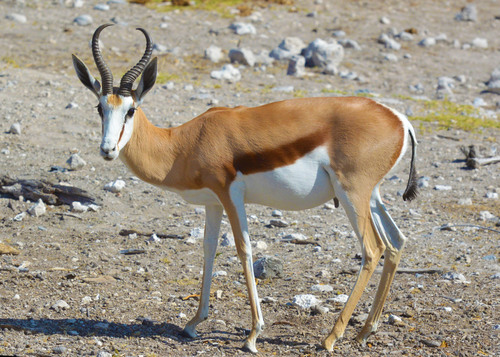
Springbok
The springbok (Antidorcas marsupialis) dazzles with its elegant leaps, known as 'pronking,' across Africa's plains. With striking tan and white markings and a role as a key grazer, it maintains the balance of its arid habitat. This antelope's agility and beauty captivate observers.
7-9 years
Lifespan
27.0 - 48.0 kg
Weight
Length: 1.0 - 1.5 m; Height: 69 - 87 cm
Size
Brown, Black, White
Color
200-400 days
Age of Sexual Maturity
4 months
Age of Weaning
55 mph
Top Speed
Least Concern
Conservation Status
Increasing
Population Trend
Characteristics
The Antidorcas marsupialis, commonly known as the springbok, is native to the open plains and arid regions of southern Africa. This graceful antelope is known for its distinctive jumping behavior, known as 'pronking,' where it leaps into the air with an arched back. It has a striking appearance with a tan body, white underbelly, and a dark brown stripe along its sides. Springboks are herbivores, primarily grazers, and play a crucial role in their ecosystem by maintaining the grassland vegetation.
Distribution Range of the Springbok
The springbok (Antidorcas marsupialis) is native to the southern regions of Africa, primarily found in countries such as South Africa, Namibia, Botswana, and Angola. Their geographical distribution extends across the arid and semi-arid regions of these countries.
Springbok's Habitat
Environmental Conditions
Springboks inhabit open plains, grasslands, and the semi-desert regions of southern Africa. They thrive in environments where there is sparse vegetation, which includes shrubland and savannahs. These areas typically feature a hot, dry climate with seasonal rainfall.
Ecological Niche
Springboks are well-adapted to arid conditions and are able to survive with limited water sources. They are herbivorous and primarily graze on grasses and shrubs. The species plays an important role in their ecosystem as grazers, helping to maintain the balance of vegetation in their habitat.
Copyright @ Nature Style Limited. All Rights Reserved.
 English
English